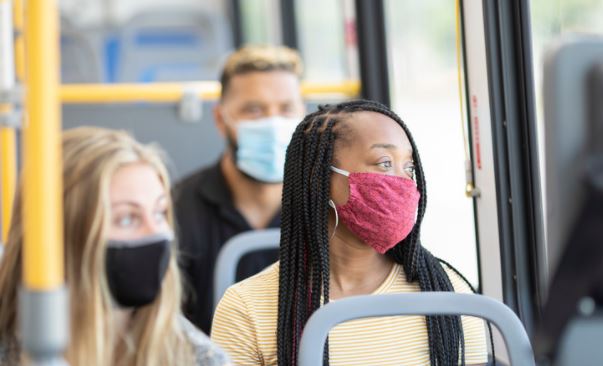2/10/2021 12:00:00 PM
The Centers for Disease Control and Prevention (CDC) issued an Order on January 29, 2021 requiring the wearing of masks by all travelers to prevent spread of the virus that causes COVID-19. Bus, Rail and Aviation operators must require all persons onboard to wear masks when boarding, disembarking, and for the duration of travel. Operators of transportation hubs must also require all persons to wear a mask when entering or on the premises of a transportation hub.
Individuals must wear masks that cover both the mouth and nose when awaiting, boarding, traveling on, or disembarking our vehicles. Individuals must also wear masks when entering or on the premises of our transportation centers.
The following are attributes of masks needed to fulfill the requirements of the Order. CDC will update this guidance as needed.
- A properly worn mask completely covers the nose and mouth.
- Cloth masks should be made with two or more layers of a breathable fabric that is tightly woven (i.e., fabrics that do not let light pass through when held up to a light source).
- Mask should be secured to the head with ties, ear loops, or elastic bands that go behind the head. If gaiters are worn, they should have two layers of fabric or be folded to make two layers.
- Mask should fit snugly but comfortably against the side of the face.
- Mask should be a solid piece of material without slits, exhalation valves, or punctures.
The following do not fulfill the requirements of the Order.
- Masks worn in a way that does not cover both the mouth and nose
- Face shields or goggles (face shields or goggles may be worn to supplement a mask that meets above required attributes)
- Scarves, ski masks, balaclavas, or bandannas
- Shirt or sweater collars (e.g., turtleneck collars) pulled up over the mouth and nose.
- Masks made from loosely woven fabric or that are knitted, i.e., fabrics that let light pass through
- Masks made from materials that are hard to breathe through (such as vinyl, plastic or leather)
- Masks containing slits, exhalation valves, or punctures
- Masks that do not fit properly (large gaps, too loose or too tight)
